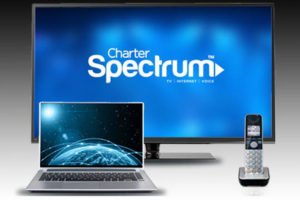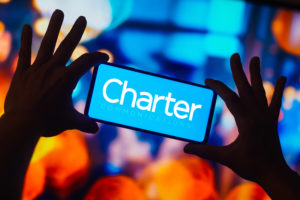Disney Takes the Blame for a Dying Industry
On the evening of September 1st, several sports fans prepared for the start of the college football season.
They turned on their televisions in anticipation of watching Florida/Utah and Minnesota/Nebraska, two unusually good opening weekend matchups.


Photo: Recorder.com
Millions of fans felt immediate frustration…and not because they were rooting for Florida or Nebraska.
When they tried to watch ESPN, they learned that Charter Spectrum had failed to renew its carriage agreement with Disney.


Photo: D23
Instead of college football, these poor, unfortunate souls were met with a message from Charter Spectrum that suggested the whole thing is Disney’s fault.
Is that accurate? Here’s why Disney is taking the blame for a dying industry.
Lonely at the Top


MICHAEL LOCCISANO/GETTY IMAGES
Technically, other cable sports channels exist. I’m told that Skip Bayless has found some sort of purgatory on Fox Sports 1 or some such nonsense.
Some of the old regional sports networks now carry the Bally Sports flag. Well, they would if Bally Sports could afford to pay the cost of flags right now.


Sinclair Broadcast Group
Sinclair Broadcast Group famously negotiated the acquisition of most remaining regional sports networks (RSNs) from The Walt Disney Company.
Imagine spending $150 on a meal at McDonald’s. That’s basically what Sinclair did with the RSNs, overpaying to the tune of more than $10 billion.


Photo: skillastics.com
Saddled with an inordinate amount of debt, Sinclair eventually spun off the RSNs into a new business, Diamond Sports Group.
That entity recently stopped paying major league baseball for rights to broadcast baseball games. That’s how broke it is.


Photo: canstockphoto
Let me be clear. A company with Sports in its name, a company that solely exists to broadcast sports, couldn’t afford to pay for its sports.
A bankruptcy court is currently settling that matter as we speak, but it exemplifies the state of the entire linear network industry as a whole.


Photo: Cable TV
For decades, cable channels and major networks earned cavernous amounts of revenue.
The arrival of Netflix and the popularization of streaming media changed all that.
This change occurred gradually at first, but then the pandemic accelerated the problem.


Photo: WHO
Now, cord-cutting has undercut the earning potential of linear networks, causing Bob Iger to describe this industry as a “no-growth business.”
Ouch.
The Last Straw?


Photo: Pexel.com
Do you know who dominates the linear networks industry? You do if you read MickeyBlog because I say it a lot.
Since 1995, linear networks have surpassed even Disney theme parks in terms of revenue generation.


Disney’s media empire doesn’t count as a monopoly per se, but it’s dominated market share in an oligopoly.
That’s a fancy way of saying that there are few companies in this business. All the others are envious of Disney.


Photo: English Jargon
That dominance within the marketplace comes with substantial overhead, though.
Every couple of years, cable companies like Comcast and Charter Spectrum negotiate agreements for carriage rights.


Photo: Deadline
That’s how much Comcast pays Disney to utilize all the channels it owns and operates.
Famously, the most expensive of them is the ESPN family. Disney expects cable vendors to pay $9.42 per subscriber.


Just to be clear, Disney charges this fee whether the Charter Spectrum subscriber watches ESPN or not. It’s the cost of doing business.
These so-called carriage fees have increased steadily as a way for Disney to offset its losses in cable subscribers.


Photo: Shutterstock
When Charter Spectrum loses 441,000 subscribers, Disney loses $4.15 million per month…just for ESPN.
Obviously, Disney operates more than a dozen channels. It earns carriage fees for each one, which explains why cord-cutting is hurting Disney as well.


Photo: Wikimedia
Meanwhile, the cost to license professional sports leagues is growing at an exponential rate. Disney must offset those added expenses as well.
So, Disney asks for higher carriage rates from cable corporations. This time, they seemed to have asked for too much.
“That’s…Too Much.”


(Pavlo Gonchar/SOPA Images/LightRocket via Getty Images)
Charter Spectrum drew a line in the sand this time.
As stories like this one indicated, Charter Spectrum took an aggressive negotiating stance. Its anti-Disney website stated the following:
“We offered Disney a fair deal, yet they are demanding an excessive increase…”


I didn’t boldface the word excessive there; Charter Spectrum did. Yikes!
From the cable vendor’s perspective, its position feels precarious, maybe even hopeless.


Photo: Media Play News
Charter Spectrum claims the second-largest number of cable subscribers with 14.7 million…but it had more than 15.1 million at the start of the year.
This Statista graph displays their eroding customer base. They lost 1.6 million subscribers since the pandemic’s start.


So, Charter Spectrum’s revenue can only maintain its current rate if it raises rates on subscribers. Meanwhile, its expenses cannot increase.
When Disney wants more money in carriage fees, Charter Spectrum must pass those expenses along to customers…who are then more likely to cut the cord.


Photo:impulsecreative.com
I over-identify with this as my wife went through it at work. From a young age, she loved the newspaper industry and stayed with it until the end.
Along the way, she encountered her fair share of executives who were stuck in the past and couldn’t acknowledge the truth about the business.


(AP Photo/Matt Dunham, file)
Something new and better had come along, thereby usurping the newspaper industry. Streaming has done the same thing with linear television.
What happens when you’re struggling to survive in a dying industry? Typically, you blame someone else…
A $65 Billion Corporation Is Complaining about the Price of Eggs


Photo: wikipedia
I’ll acknowledge my bias here. I’m a decidedly anti-cable person in that the arrogance of these professionals has always stunned me.
For the body of a quarter-century, customers have loudly, repeatedly told cable companies what they want.


Photo: NPR
An a la carte ordering system would have empowered subscribers to select the cable channels they wanted.
That common-sense option never occurred because cable companies spent tens of millions of dollars lobbying politicians to prevent such policies.


Photo:cnet.com
Now that we’ve reached the endgame, Charter Spectrum has suddenly decided that its subscribers cannot live without ESPN, but they don’t need some other Disney channels.
First, that should be the customer’s choice, not Charter’s. Second, Charter never cared until its balance sheet started looking ugly.


Photo Credit: AP Photo/Richard Drew, File
After years of corporate malfeasance, Charter is taking a stand against Disney in a way that blames ESPN for costing a lot.
While that’s true, Charter could easily afford to pay those carriage fees, at least for the time being.
That’s why Charter relented and agreed to higher carriage fees in this dispute.


Photo: CNBC
In fact, Charter’s stock had surged from $325 on June 22nd to $451 on August 29th before business journalists learned about the Disney conflict.
The company’s market cap has increased by $14 billion in less than three months. Charter is not just surviving; it’s thriving.


Photo:Rappler
That’s because Charter’s real business these days involves high-speed internet subscriptions.
The company claims more than 30 million internet subscribers, which more than doubles its total of cable subscribers.


Photo: wirefly.com
Do you know what all those customers desire? Disney content.
How they watch the content borders on irrelevant to them. On Charter’s side, this is about squeezing every penny it can from a dying business.


Photo: ESPN+
Eventually, Charter acknowledged this with its settlement. Charter agreed to pay more for the channel that matters, ESPN.
However, Charter dropped several Disney-owned cable channels rather than pay those fees.


Photo: Wikimedia
With that strategy, Charter could maintain its current subscription cost rather than raise rates on customers.
In addition, Charter added the ad version of Disney+ as a tier for its customers, a kind of bonus that it’s paying Disney more money to offer.
Is Disney to Blame for a Dying Industry?


Photo: Playbuzz.com
Are any of linear television’s struggles Disney’s fault? No. Should Disney stop raising carriage fees for its linear networks? I mean, yes. Linear television is dying, after all.
Still, that’s like saying Charter should freeze the cost of its internet services, though. Businesses don’t do that.


Photo: DVC
They raise rates at pace with, if not exceeding, the rate of inflation.
In layperson’s terms, this entire affair boils down to Charter realizing that the lease is about to expire.


So, Charter renegotiated with the landlord to avoid a rate increase. Did that work? Yes and no.
Charter subscribers can watch college and NFL football again on ESPN channels. But they can’t watch Freeform’s 31 Days of Halloween.


Freeform
Either way, Disney hasn’t done anything wrong here. It’s business as usual for the Mouse.
In fact, as I’ll demonstrate in a future article, Disney wound up cleaning Charter’s clock in this deal.


charter spectrum
Charter pitched a fit because it wanted a pound of flesh here. That strategy didn’t work. And my advice here is simple, albeit glib, to impacted customers.
Charter Spectrum subscribers who aren’t ready to cut the cord should at least switch to YouTube TV.


Photo: The Walt Disney Company
This service offers a four-game split screen, which is ideal during the football season and March Madness. It’s forward-thinking, something Charter Spectrum is not.


Photo: MickeyBlog
Thanks for visiting MickeyBlog.com! Want to go to Disney? For a FREE quote on your next Disney vacation, please fill out the form below, and one of the agents from MickeyTravels, a Diamond Level Authorized Disney Vacation Planner, will be in touch soon!
Feature Photo: (Charley Gallay / Getty Images for Disney)










